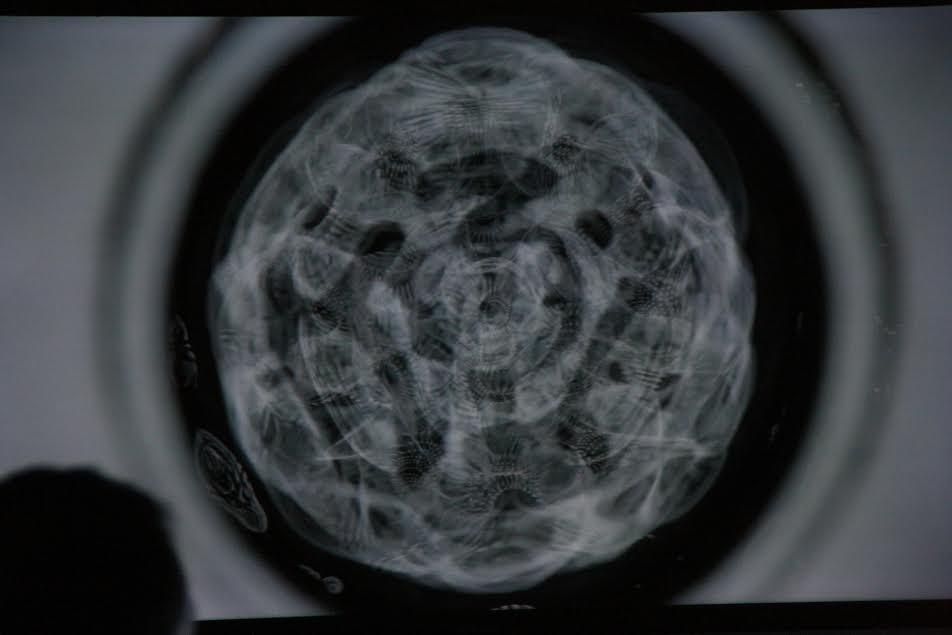By: Jacob Dubé
We all know what language sounds like. But if we could map it out, what would it look like?
Two Ryerson professors are researching the differences and patterns between English and some Indigenous languages through visual technology.
Profs Lila Pine of RTA and Joanne DiNova from professional communications used a CymaScope, a machine that maps out sound through 2,500 microliters of sterile water that can then be projected onto a screen, to analyze the roots and similarities between different languages and dialects.
During their presentation on March 14, they played a video of two people — one with an Americanized accent and the other with an English accent — recorded through the CymaScope, saying, “Bear.” The reaction in the water was very abrupt. The recording then showed Pine saying the same word translated in Mi’gmag, followed by DiNova speaking in Anishinaabemowin, the languages of their respective backgrounds.
The water in the device began to make almost snowflake-like patterns, changing with every dialect and language. They also added that the water has to be changed every time, because it becomes molecularly charged when sound passes through it.
One of the goals of their project is to find in the English language what they call its “mother,” — the ancestral roots connected to a language and a culture. They say that through time, with colonization and technology, modern English has lost the essence of what connects it to a people.
By looking for English’s “mother,” they hope to “indigenize” the language.
They are currently working on an algorithm that allows them to quantify the sound recordings through the CymaScope to properly analyze their findings.










Leave a Reply